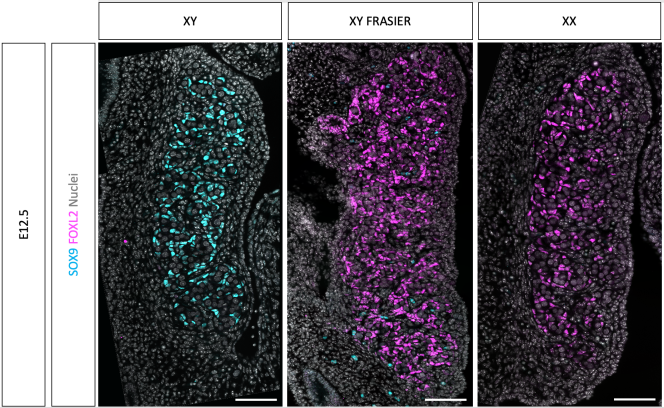


In the embryo, what are the molecular signals that determine whether it becomes male or female? One would have thought this was a foregone conclusion, given the increasing precision with which the activity of our genes, in the microcosm of each cell, has been mapped.
Well, no. While the trigger for male differentiation has been known since 1990 – namely the famous SRY gene, carried by the Y chromosome – its equivalent for female differentiation remained a mystery.
This gap was filled by a study published in the journal Science, on November 3, in which a team from Inserm-CNRS at the Université Côte d'Azur, Nice, revealed the subtle genetic mechanism that initiates the ovary formation process.
To begin with, we must bear in mind an important fact. At an early stage in the embryo, the sexual organs have both male and female potential. This is the case for the embryos that give rise to the gonads (ovaries or testes) and those that give rise to the genital tract (fallopian tubes, uterus and vagina on the female side; vas deferens, epididymides and ejaculatory duct on the male side). Then, as the embryo develops, there is a constant battle between the genes that tip the balance to the male side and those that tip it to the female side.
In a human embryo with one X and one Y chromosome, the SRY gene is switched on between the fifth and seventh week of pregnancy. This marks the start of male development: a gene on chromosome 17, the SOX9 gene, is activated, triggering differentiation of the testes. The testicles begin to produce testosterone and its derivatives, which masculinize the embryo.
Do we become female "by default," in other words simply in the absence of the Y chromosome and the SRY gene – as has long been thought? No. There is in fact a male and a female program, governed respectively by a cascade of "male" and "female" genes. The male cascade activates the development of male organs while inhibiting that of female organs – and the female cascade does the opposite.
Let's get back to the discovery published in Science. How does the embryo switch to a female destiny? Thanks to the WT1 gene, known since 1991. "We knew that this gene governs the production of two forms of the same protein: the first (+ KTS) has three more amino acids than the second (- KTS). We also knew that the ratio of these two forms is important for gonad differentiation and the development of kidney diseases," says Marie-Christine Chaboissier, who heads the CNRS-Inserm Genetics of Sex Determination and Fertility laboratory at the Université Côte d'Azur, and who coordinated the study.
You have 50% of this article left to read. The rest is for subscribers only.
